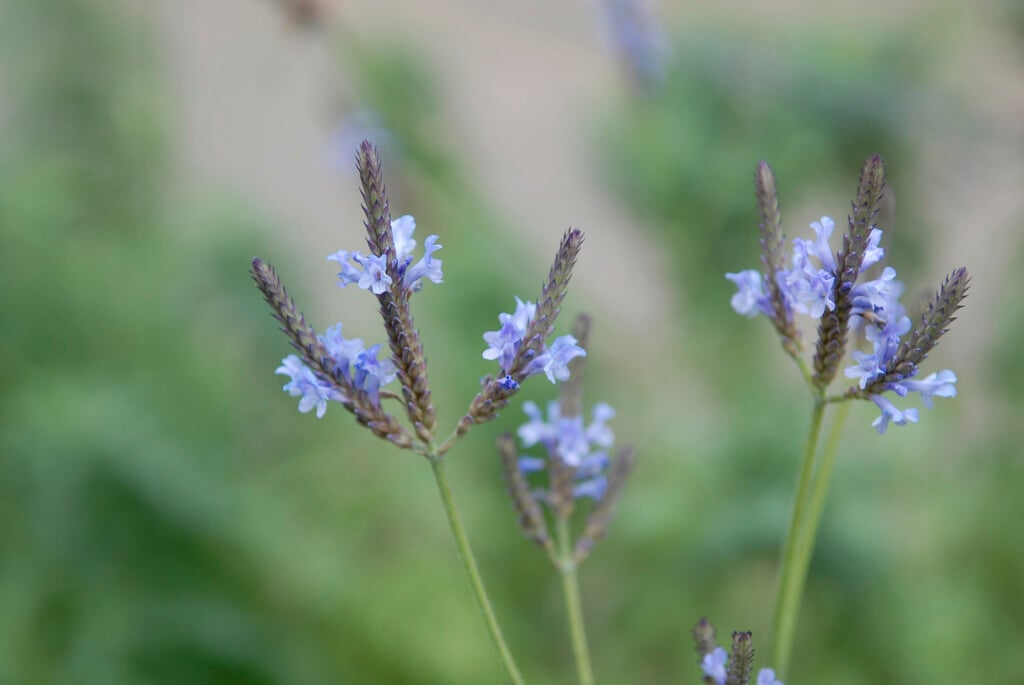Lavandula canariensis
Canary Island lavender
A half-hardy evergreen shrub, with finely divided, slightly hairy grey-green leaves. Spikes of small, fragrant blue flowers, opening from dark purple buds, are borne on slender branching stems in summer
Size
Ultimate height
0.5–1 metresTime to ultimate height
2–5 yearsUltimate spread
0.5–1 metresGrowing conditions
Moisture
Well–drainedpH
Acid, Alkaline, NeutralColour & scent
| Stem | Flower | Foliage | Fruit | |
| Spring | Green Grey Silver | |||
|---|---|---|---|---|
| Summer | Blue Purple | Green Grey Silver | ||
| Autumn | Green Grey Silver | |||
| Winter | Green Grey Silver |
Position
- Full sun
Aspect
South–facing
Exposure
Sheltered Hardiness
H3Botanical details
- Family
- Lamiaceae
- Native to GB / Ireland
- No
- Foliage
- Evergreen
- Habit
- Bushy
- Genus
Lavandula are small aromatic evergreen shrubs with usually narrow, simple, entire, toothed or lobed leaves and small tubular flowers in dense spikes in summer
- Name status
Correct
How to grow
Cultivation
Thrives in well-drained, ideally slightly alkaline soil; will not tolerate waterlogging. In warmer regions, may be planted out in a sunny, sheltered position with winter protection. In areas prone to frost, grow in containers and overwinter in a greenhouse or conservatory. See lavender cultivation for more advice
Propagation
Propagate by semi-hardwood cuttings in summer
Suggested planting locations and garden types
- City and courtyard gardens
- Cottage and informal garden
- Patio and container plants
- Wildlife gardens
- Mediterranean climate plants
- Conservatory and greenhouse
- Flower borders and beds
Pruning
Pruning group 10; deadhead after flowering and trim foliage in spring
Pests
May be susceptible to rosemary beetle and cuckoo spit (froghoppers)
Diseases
May be susceptible to grey moulds (Botrytis) and honey fungus (rarely)
Love gardening
Sign up to receive regular gardening tips, inspiration, offers and more
View our Privacy Policy
Get involved
The Royal Horticultural Society is the UK’s leading gardening charity. We aim to enrich everyone’s life through plants, and make the UK a greener and more beautiful place.

